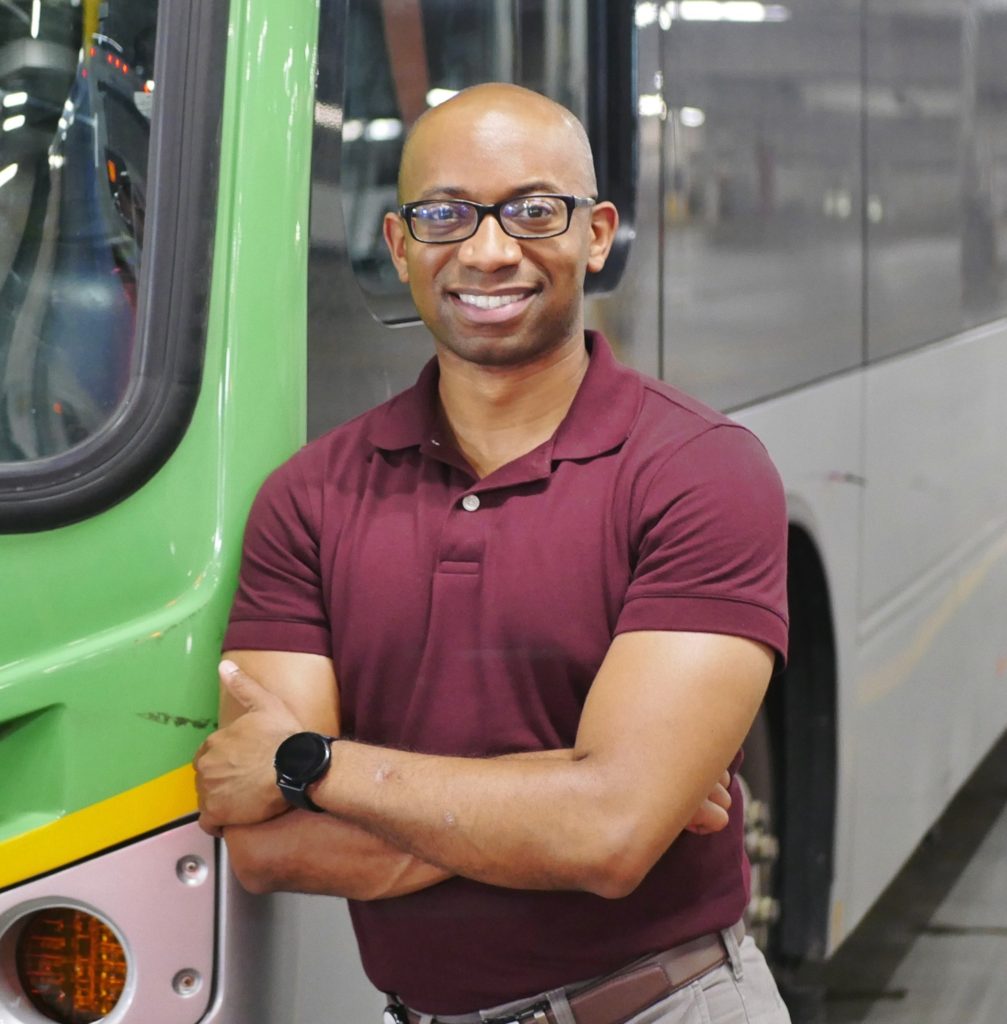
As I reflect on my time in Indianapolis and with IndyGo, I am struck by the magnitude of the improvements we have made. From opening the Julia M. Carson Transit Center, building the Red Line Rapid Transit, and launching the MyKey fare payment system, we’ve made significant strides in providing better mobility for the City of Indianapolis.
It’s well-known that transit is a critical service for so many in our community – and that making service more frequent and more reliable opens the door for many more to choose transit over a personal vehicle. I myself am a proud IndyGo rider, cyclist, and pedestrian. Good transit provides access to opportunity and serves as the connective tissue of our community. Where you can go dictates who you can meet and what jobs you can have.
Traveling the city on foot, by bike, and on transit strengthens your connection to the landscape and fellow citizens around you. If you really want to get to know a city, you must navigate it on a human scale and not in a car. But we must be able to do so safely and reliably.
The Purple and Blue rapid transit lines proposed by IndyGo will make significant contributions to the safety of our streets, for bus riders, drivers, cyclists, and pedestrians alike. According to Smart Growth America, pedestrian fatalities have risen by 35% nationwide over the last decade, and Indianapolis’ 7th district ranks as one of the worst for pedestrians in the country. This is due to poor infrastructure and a lack of safe street crossings. Repaving our roads, repairing our sidewalks, and crosswalks will be critical to building an Indianapolis that is accessible to all. With nearly 200 million dollars in infrastructure investment planned that’s a lot of smooth roads for motorists and a lot of sidewalk improvements for pedestrians.

Since the passage of the transit referendum in 2016 – which 60% of voters supported – IndyGo has been dedicated to implementing service improvements that are long overdue for our city. I personally do not like to drive. My desire is to live in a community where the need to own a car is optional. The increased frequency on IndyGo routes 8 and 39, along with the Red Line have made it much easier for me to live a car-lite lifestyle in Indy. However, there is work still to be done.
The upcoming Purple and Blue rapid transit lines proposed by IndyGo will put a major dent into some of that work. It’s important to remember that BRT serves as the central spine of a system, a network that is designed to work together. If one area is crippled the entire system could be impacted. Currently, there is legislation at the Statehouse that puts the momentum of all of IndyGo’s hard work at risk.

What’s at risk? Free rides for veterans, half fare for youth and students, discounted programs for IPS, frequent and efficient service outside the downtown proper are all risk. Increased opportunities for economic development, attracting new talent to the city, creating a more resilient and connected community are all at risk. As I look to begin a new chapter in my career I hope to look back on my work with fondness, not in vain. It is imperative that IndyGo be allowed to continue the work of binging better mobility to Indianapolis. What type of community do we want to leave behind for future generations? I encourage those who support transit to contact their state legislators and let them know you do not support SB 141.





